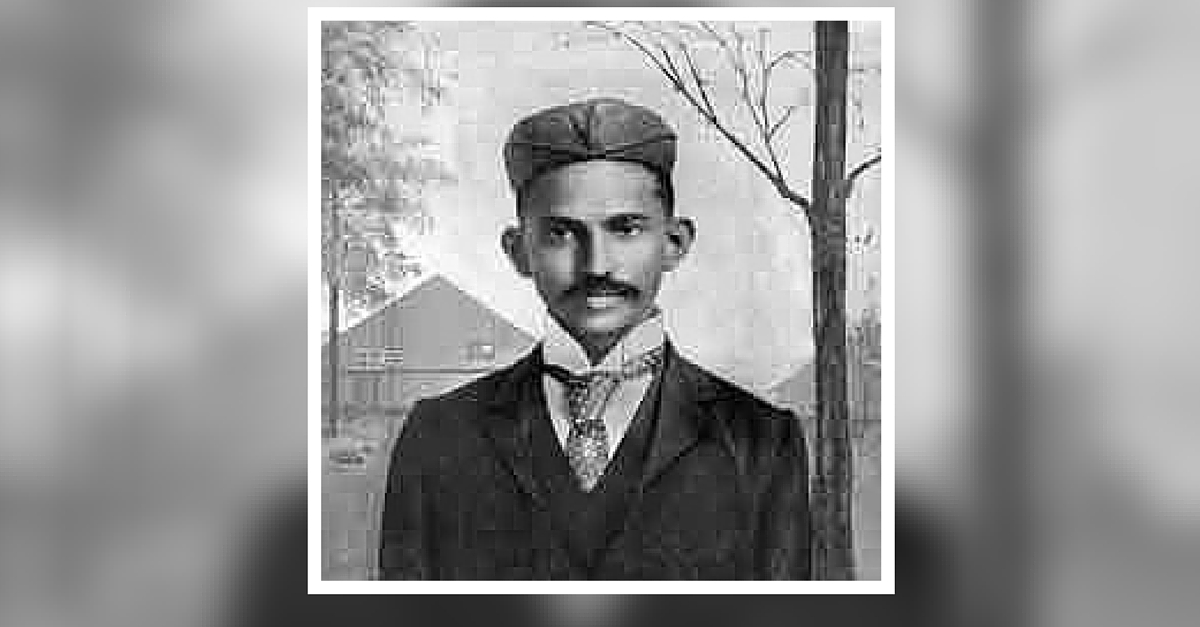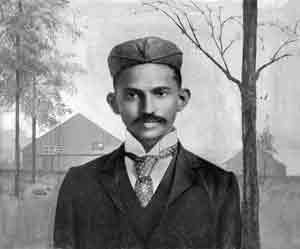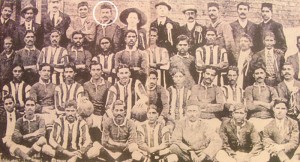Meet Mohandas Karamchand Gandhi – The Football Aficianado
You have heard stories of Gandhi's ideology, passion and struggle. You know him to be the driving force behind India's independence. But did you know that Gandhi had a deep interest in football in his initial years in South Africa? And he found a pretty amazing use for it.

You have heard stories of Gandhi’s ideology, passion and struggle. You know him to be the driving force behind India’s independence. But did you know that Gandhi had a deep interest in football in his initial years in South Africa? And he found a pretty amazing use for it.
We know of the many avatars of Mahatma Gandhi — a leader, a lawyer, the father of the nation. But did you know Gandhi was a football legend too?
Gandhi, who went on to become the driving force behind India’s struggle for independence, started his career as a lawyer in South Africa. It was there that he started forming his non-violence ideology that would one day shake the world.
But, before Gandhi become a household name for his philosophy of ahimsa, did you know he used football to spread his ideas?
Photo: Wikipedia
Gandhi had become familiar with the sport while studying law in England. Though he did not take it up seriously, he did develop a special interest in the game.
When he went to South Africa, he noticed the popularity of the game among the less affluent people of the country. These were exactly the kind of people among whom he wanted to promote his ideas of passive resistance.
Football then became a means through which Gandhi took his principles of satyagraha to the masses.
Photo: footysphere.com
Gandhi established three football clubs in Durban, Pretoria and Johannesburg. All three clubs were called ‘Passive Resisters Soccer Club.’
Though it is unclear if Gandhi ever played for any of these clubs, his presence in team photos and his speeches to the team members prove that he played a crucial role in their activities.
Photo: mettacenter.org
Gandhi used sports gatherings to distribute pamphlets about racial discrimination and other social ills to the game spectators.
The money raised from these sporting events helped fund the families of those people who had been imprisoned for their non-violent struggle against local racist laws.
Gandhi and his contemporaries left a sporting legacy in South Africa aside from the more obvious social one. Due to their efforts, a large number of non-whites were able to get involved in structured sports. Federations like Transvaal Indian Football Association, or the Klip River District Indian Football Association, and the more famous South African Association of Hindu Football are examples of Gandhi’s organizational skills.
As we all know, Gandhi then moved back to India to fight for the country’s freedom. With time, Gandhi’s connection with football faded away. Once in India, he did not support sports and called them a mere past time that his countrymen could ill afford.
But his initial years with football in South Africa are still considered crucial in South Africa’s sports history. Rebecca Naidoo, a great granddaughter of Gandhi’s long-time collaborator G.R. Naidoo, who has spent many years contributing to research on Gandhi’s South African years at the Court House Museum, pointed out in an interview with FIFA, “Two of the most prominent football teams in South Africa’s more recent sporting history may never have existed were it not for Gandhi’s efforts, with the now-defunct Johannesburg club Moonlighters FC and former Durban side Manning Rangers both emerging from the fledgling Indian football community that had been nurtured by Gandhi and his colleagues.”
Although, ultimately, Gandhi’s take on football is confusing since he promoted it in South Africa but was against it in India, it cannot be denied that it must have held a special place in his heart for him to have been such an avid spectator and organizer at the very least. Most importantly, he used it to further a cause that eventually benefitted both India and South Africa.
Like this story? Or have something to share? Write to us: [email protected], or connect with us on Facebook and Twitter (@thebetterindia).
This story made me
-
97
-
121
-
89
-
167
Tell Us More
We bring stories straight from the heart of India, to inspire millions and create a wave of impact. Our positive movement is growing bigger everyday, and we would love for you to join it.
Please contribute whatever you can, every little penny helps our team in bringing you more stories that support dreams and spread hope.






















